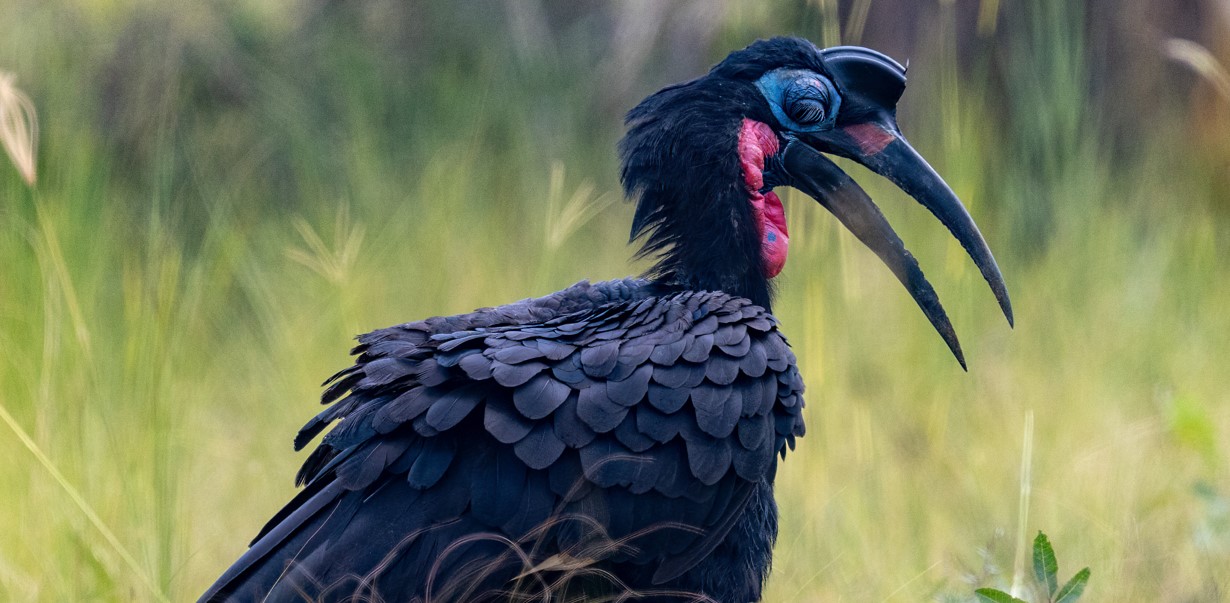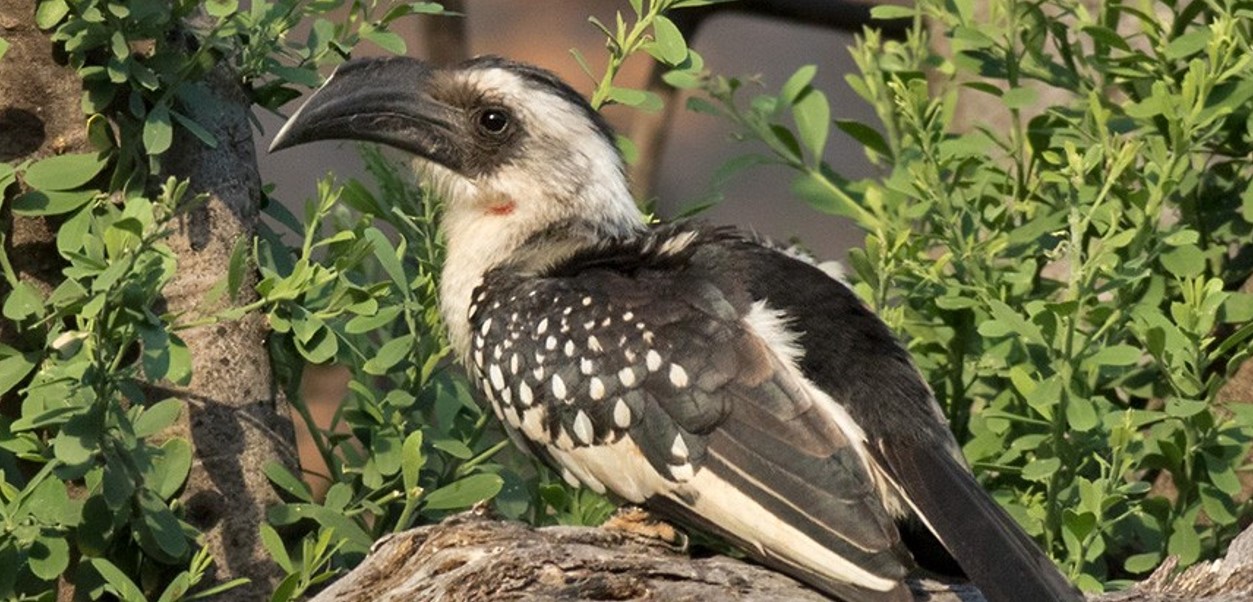
Birding in Pian Upe Game Reserve
Birding in Pian Upe Game Reserve is a truly enchanting experience for nature lovers and bird enthusiasts. Pian Upe Wildlife Reserve is located in the northeastern region of Uganda, offering a diverse range of habitats, including grasslands, woodlands, and wetlands, which provide ideal conditions for various bird species. The reserve is a sanctuary for about 240 bird species, making it one of the richest areas for bird density in Uganda. Notable species include the Karamoja Apalis (endemic to northeastern Uganda), Abyssinian Ground Hornbill, Superb Starling, Secretary Bird, and the Common Ostrich. The Wildlife Reserve offers unique birding Opportunities. The Loporokocho swamp within the reserve is a prime spot for birding, offering sightings of the Black-breasted Barbet and d’Arnaud’s Barbet. The extension of Lake Opeta near the reserve’s boundary is one of the few places in the world where the Fox’s Weaver can be observed.
Guided birding tours are available, providing opportunities to see rare species like the White-headed Babbler and the Stone Partridge. Birders can enjoy the wilderness and the chance to spot both common and rare species in their natural habitat. Pian Upe Wildlife Reserve is not only a haven for birds but also plays a crucial role in the conservation of these species, many of which are unique to the region. Birdwatchers should come equipped with binoculars, a bird guidebook, and a camera to capture the beauty of the birds and the landscape. Visitors should be prepared for an adventure, as birding in Pian Upe can involve traversing various terrains to get the best sightings. Birding in Pian Upe Wildlife Reserve is an activity that promises rich rewards for those who venture into its vast landscapes. With its remarkable bird diversity and beautiful natural settings, it’s a must-visit destination for anyone interested in the avian world.
Bird Species found in Pian Upe Wildlife Reserve.
Pian Upe Wildlife Reserve is a birdwatcher’s paradise, hosting a variety of bird species each with unique behavioural characteristics. Here are some of the birds found in the reserve and their notable behaviours:
- Ostrich (Struthio camelus): The world’s largest bird is known for its fast running speed and large eggs. Males perform a distinctive mating dance to attract females.
- Secretary Bird (Sagittarius serpentarius): A large, mostly terrestrial bird of prey, known for its long legs and distinctive crest of quill-like feathers. It hunts on foot, stomping on prey such as snakes and rodents.
- Abyssinian Ground Hornbill (Bucorvus abyssinicus): Recognizable by its large size and casque on the bill. Lives in family groups and forages on the ground for insects, small mammals, and reptiles.

- Karamoja Apalis (Apalis karamojae): Endemic to the region, this small bird is often found in pairs or small groups. It has a distinctive call and actively flits through the shrubbery in search of insects.
- Superb Starling (Lamprotornis superbus): Known for its iridescent blue-green plumage and orange chest. It is gregarious, often found in noisy flocks, and is not shy around humans.
- Jackson’s Hornbill (Tockus jacksoni): Identified by its white belly and black back and wings. It nests in tree cavities and is often seen in pairs or small family groups.

- Great Hartlaub’s Bustard (Lissotis hartlaubii): A large bird with a long neck and legs, known for its slow, deliberate walk. Males perform a dramatic display flight during the breeding season.
- White-headed Buffalo Weaver (Dinemellia dinemelli): Notable for its white head and red rump. It builds large, communal nests that are often used by several pairs at once.
- Fox’s Weaver (Ploceus spekeoides): A species endemic to Uganda, found near water bodies. It is known for its unique, pendulous nests woven from grass.
These species add to the rich tapestry of bird life in Pian Upe, each contributing its unique voice and behaviour to the ecosystem. Birdwatchers can delight in the opportunity to observe these species in their natural habitat, adding to the already impressive list of savannah bird species that roam the reserve like the Abyssinian and Lilac-breasted Roller, Foxy, Dessert, Wailing, Short-winged and Red Pate Cisticola, Abyssinian Scimitarbill, the scruffy bush Hemprich’s Hornbill, Fan-tailed Grassbird, Quail Plover, Brown-backed and Nubian Woodpecker, Yellow-bellied Eremomela, Pygmy and Grey-headed Batis, White-crested Helmet Shrike, Red-fronted and D’Arnaud’s Barbet, Emerald-spotted Wood-Dove, Stone Partridge, White-tailed, Singing Bush and Foxy Lark, Clapperton’s Spurfowl, Common Buttonquail, Three-banded and Temminck’s Courser, late evening drives can produce the Slender-tailed, Standard-winged and Pennant Winged Nightjar, Bruce’s Green Pigeon, Fan-tailed Raven, Foxy Kestrel, Dark-chanting Goshawk, Black-winged Kite, Jacobin Cuckoo, Sooty-chat, Spotted Palm-thrush, Common redstart, Norrthen, Isabelline and Pied Wheatear, Pallid and Montagues Harrier among others
The best places to spot different bird species in Pian Upe Wildlife Reserve.
Birding in Pian Upe Game Reserve offers a chance to see a diverse array of bird species across different habitats. Here are some prime spots for birding within the reserve and the species you might encounter:
Loporokocho Swamp: A marshy area known for its rich birdlife. Look out for the Black-breasted Barbet, d’Arnaud’s Barbet, White-bellied Tit, and Rufous Chatterer.
Cheposukunya Hot Springs: Early mornings or evenings are the best times for birdwatching here. Species such as the Eastern Paradise Whydah, Purple Grenadier, and various migratory birds can be spotted.
Extension of Lake Opera: This area is one of the few places where the Fox’s Weaver can be seen. Other species include the Abyssinian Roller, Eurasian Hoopoe, and Abyssinian Scimitarbill.
Savannah Areas: The open grasslands are perfect for spotting savannah birds like the Common Ostrich, Secretary Bird, and Karamoja Apalis.
Wooded Areas: These areas are good for seeing species like the Superb Starling, Abyssinian Ground Hornbill, and Jackson’s Hornbill.
Rocky Outcrops (Kopjes): Birds that prefer rocky habitats, such as the Verreaux’s Eagle and Pygmy Falcon, can often be found here.
Each of these locations within Pian Upe Wildlife Reserve offers a unique birding experience with a chance to observe different behaviours and species in their natural habitats
What is the best time to go birding in Pian Upe Wildlife Reserve?
For an optimal Birding in Pian Upe Game Reserve, timing is key. Here’s a detailed guide on when to visit:
Best Time for Birdwatching: Dry Season (November to March): This period offers the best birdwatching conditions. The vegetation is less dense, making it easier to spot birds. The weather is generally sunny and dry, which not only is pleasant for visitors but also means birds are more active and visible as they search for water and food.
What to Expect Each Month:
November: As the dry season begins, migratory birds start arriving, adding to the resident species. It’s a great time to see a mix of local and international avifauna.
December: The reserve is still lush from the wet season, but with less rainfall, providing a vibrant backdrop for bird photography.
January to February: These are the peak dry months. Birds congregate around water sources, making them easier to observe. The weather is hot, so early morning or late afternoon birding is recommended.
March: The end of the dry season can sometimes bring early rains, but it’s still a good time for birdwatching as the migratory birds prepare to leave.
Tips for Birdwatchers:
Early Morning: The best sightings often occur in the early hours when birds are most active.
Guided Tours: Consider hiring a local guide who knows the best spots and can identify species and calls.
Equipment: Bring binoculars, a bird guidebook, and a camera with a good zoom lens.
Clothing: Wear comfortable, neutral-coloured clothing to blend into the environment.
Patience: Some species are elusive, so patience is key.
Remember, each visit to Pian Upe is unique, and the variety of birds you’ll see can vary from day to day. With its diverse habitats and species, Pian Upe Wildlife Reserve is a year-round birdwatcher’s delight, but visiting during the dry season will give you the best chance to see the widest variety of birds in their natural setting.
